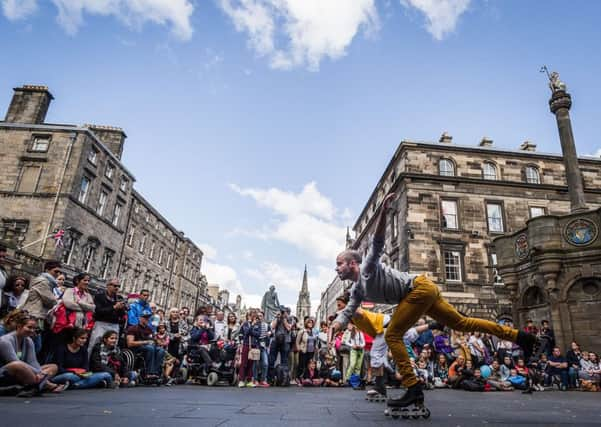Edinburgh City Council reveals year-round culture blueprint


The capital’s universities will also be urged to help ensure the city retains its crown as a “world-class” cultural capital.
Artists would be encouraged to set up pop-up venues for rehearsals and performance in disused buildings under a new blueprint published today by the city council.
Advertisement
Hide AdAdvertisement
Hide AdCultural elements may have to be guaranteed in major developments before they win planning permission in future.
And Edinburgh is set to seek inspiration from other towns and cities around the world in a bid to deliver more public art around the capital.
The Culture Plan for Edinburgh has emerged in the wake of a three-year consultation which found widespread concerns about a lack of support for grassroots artists and organisations staging year-round events.
The council was accused of imposing too much red tape on artists outwith the main Edinburgh Festival period, with severe restrictions on live music events and a lack of affordable space.
It has promised action to provide better support for the live music scene in Edinburgh, following concerns that promoters and gig organisers have to grapple with some of the UK’s most restrictive rules over amplified music.
The council is also pledging to offer much better support in future for small arts organisations and lone artists.
Richard Lewis, the city council’s culture leader, told The Scotsman: “We’ve been working on this new plan for the last three years and I was really keen that we go out and consult a lot more.
“What came out strongly in terms of the council was that people wanted clarity on how to do things.
Advertisement
Hide AdAdvertisement
Hide Ad“One of the biggest things that came back from the cultural sector was the message that we had to make things simpler. People don’t have the time to spend day after day wrapped in red tape.
“By its nature, the arts world is very wide. Creatives often come up with ideas out of nowhere that don’t necessarily sit into pre-determined formats that you’ve decided for them. We’ve got to be flexible, we’ve got to be open and we’ve got to listen.”
The business sector and universities are likely to be represented on a new cultural task force which will aim to ensure that cultural provision in Edinburgh remains at the highest level - and is open to all.
A new “body of evidence” on the case for investing in the cultural sector and the benefits of the city’s year-round events - now thought to be worth more than £300 million - is to be compiled to help maintain funding levels in the face of a predicted “fiscal cliff.”
The new 26-point action plan, expected to be approved by councillors next week, is expected to instigate moves to address long-standing gaps in the city’s cultural infrastructure, particularly the lack of a medium-sized concert venue.
Cllr Lewis added: “At a time of tightening budgets, it is important for us to think creatively, it is not just for artists to do that.
“We have to think of different ways of doing things and not just signing off the same grant forms year after year.
“The council cannot be the answer to all these issues. With Creative Scotland and the Scottish Government in the mix, it has to be a collaborative and collective process.”